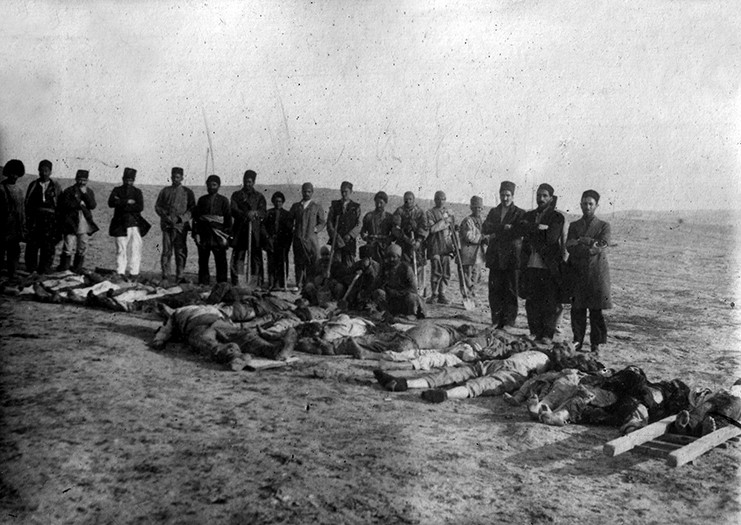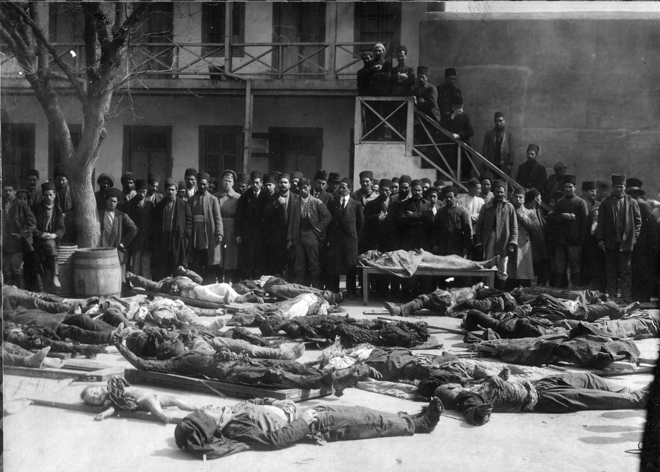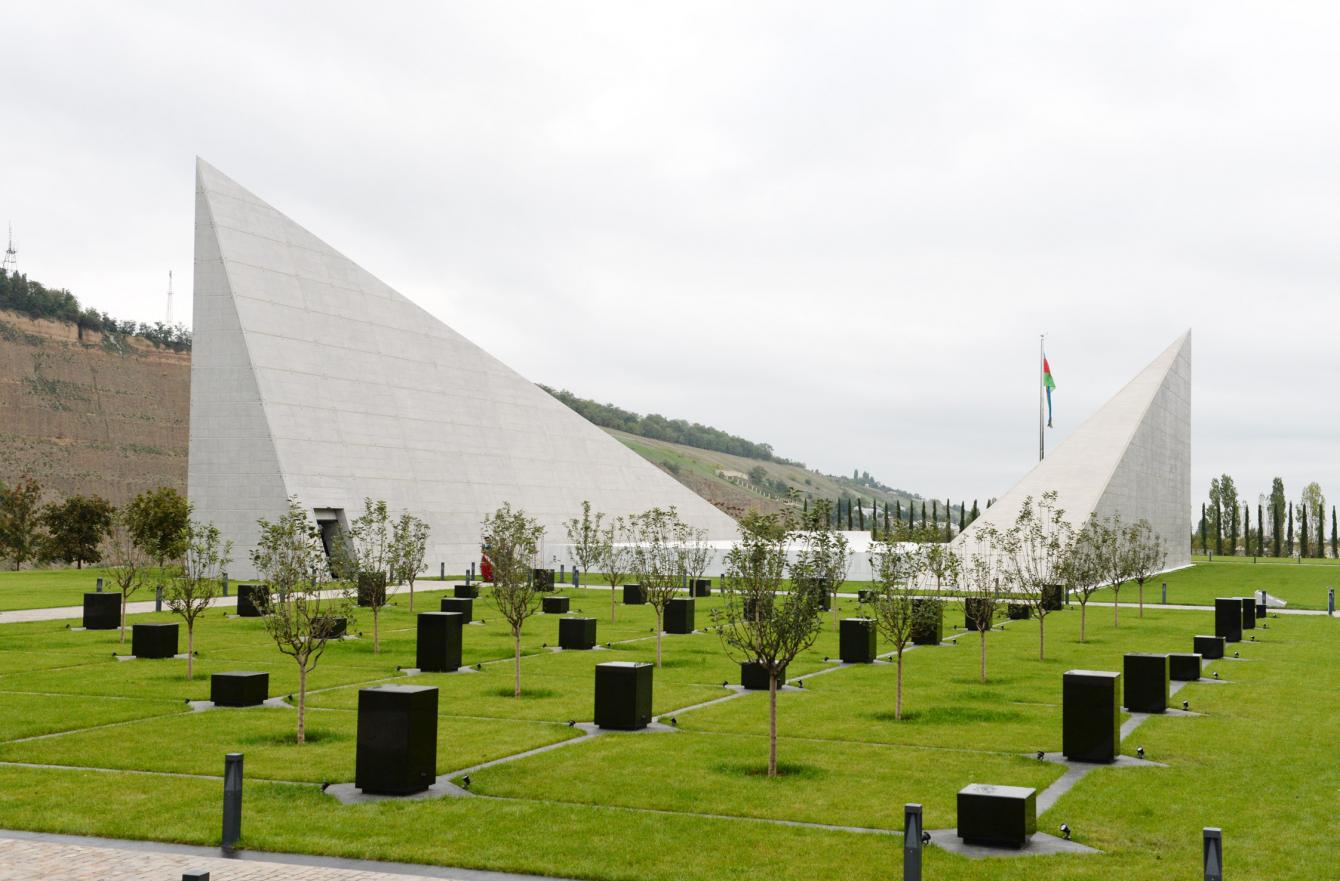
The foundation for the partition of the Azerbaijani people and the division of our historical lands was laid by the Gulistan and Turkmenchay treaties signed in 1813 and 1828, respectively. In the subsequent phase, the process of alienating these lands began. Within a short period, there was a mass relocation of Armenians to Azerbaijani lands.
Despite the fact that Armenians resettled in the territories of the Irevan, Nakhchivan, and Karabakh khanates were a minority compared to the Azerbaijanis living there, they nonetheless managed, under the patronage of their protectors, to achieve the creation of an administrative division called the "Armenian Oblast." This artificial territorial division, in fact, created conditions for the expulsion of Azerbaijanis from their lands and the implementation of a genocide policy against the Azerbaijani people. To realize the idea of "Greater Armenia" on Azerbaijani lands, the falsification of Armenian history began. Distorting the history of Azerbaijan and the entire Caucasus was an important part of this activity.
Encouraged by the chimerical idea of creating "Greater Armenia," Armenian invaders carried out mass massacres of Azerbaijanis in 1905-1907. The mass massacres initiated in Baku by Armenians spread to Azerbaijan and Azerbaijani villages in the territory of present-day Armenia. Hundreds of settlements were destroyed, and thousands of Azerbaijanis were brutally killed.
Skillfully taking advantage of World War I and the February and October Revolutions in Russia in 1917, the Armenians this time attempted to realize their insidious intentions under the Bolshevik flag. From March 1918, the Baku Commune, under the slogan of fighting counter-revolutionaries, implemented a plan to cleanse the Baku Governorate of Azerbaijanis.
In those days, tens of thousands of peaceful residents in the city of Baku, as well as in Shamakhi, Guba, and other cities and districts within the Baku Governorate, were killed precisely because of their ethnic and religious identity.  Settlements were destroyed, cultural monuments, mosques, and cemeteries were wiped off the face of the earth. Subsequently, even more ferocious Armenian nationalists continued their inhuman deeds, committing mass murders, looting, and ethnic cleansing in Karabakh, Zangezur, Nakhchivan, Shirvan, Irevan, and other regions.
Settlements were destroyed, cultural monuments, mosques, and cemeteries were wiped off the face of the earth. Subsequently, even more ferocious Armenian nationalists continued their inhuman deeds, committing mass murders, looting, and ethnic cleansing in Karabakh, Zangezur, Nakhchivan, Shirvan, Irevan, and other regions.
After the establishment of the Azerbaijan Democratic Republic, special attention was given to the events of March 1918. On July 15, the Council of Ministers adopted a resolution to create an Extraordinary Investigation Commission to investigate this tragedy. The commission investigated the March genocide, the atrocities committed in Shamakhi initially, and the serious crimes committed by Armenians in the territory of the Irevan Governorate. A special structure was created within the Ministry of Foreign Affairs to bring these realities to the attention of the world public. In 1919 and 1920, March 31 was twice commemorated by the Azerbaijan Democratic Republic as a day of national mourning. In essence, this was the first attempt to give a political assessment to the genocide committed against Azerbaijanis and the over a century-long process of occupation of our lands. However, after the fall of the Democratic Republic, this process was halted, and the investigation and political-legal assessment of the events were prevented.
Only 80 years later, in the Decree "On the Genocide of Azerbaijanis," signed by the President of the Republic of Azerbaijan, Heydar Aliyev, on March 26, 1998, were these monstrous events given an adequate political assessment, and March 31 was declared the "Day of the Genocide of Azerbaijanis." The Decree stated: "All the tragedies of Azerbaijan in the 19th-20th centuries, accompanied by land seizures, were various stages of a deliberate and systematically implemented policy of genocide against Azerbaijanis by Armenians. There were attempts to give a political assessment only to one of these events - the March massacre of 1918. The Republic of Azerbaijan, as the successor of the Azerbaijan Democratic Republic, considers it its duty to give a political assessment of the genocide events as a logical continuation of the decisions that the ADR could not fully implement."
 National leader Heydar Aliyev said in connection with March 31 - "Day of the Genocide of Azerbaijanis": "Bringing to the world states and influential international organizations the truth about the genocide committed against our people based on real arguments and facts, changing the false perceptions formed as a result of fake Armenian propaganda, achieving a political-legal assessment of it, no matter how difficult it may be, must continue today and in the future as an honorable and sacred duty. This is a sacred duty of the current generation to the memory of the victims of the genocide."
National leader Heydar Aliyev said in connection with March 31 - "Day of the Genocide of Azerbaijanis": "Bringing to the world states and influential international organizations the truth about the genocide committed against our people based on real arguments and facts, changing the false perceptions formed as a result of fake Armenian propaganda, achieving a political-legal assessment of it, no matter how difficult it may be, must continue today and in the future as an honorable and sacred duty. This is a sacred duty of the current generation to the memory of the victims of the genocide."
Thanks to research conducted in recent years in this area, numerous new facts and documents have been collected. The mass grave discovered in the city of Guba is one of the bloody testimonies of this tragedy. In April-May 1918, 167 villages in the Guba district were completely destroyed. The grave, associated with the Guba genocide, was discovered on April 5, 2007, during excavation work in this area. In 2009, by order of the Cabinet of Ministers, the "Action Plan for the Perpetuation of the Memory of the Victims of the Massacre in the Guba District" was approved, and a decision was made to erect a monumental memorial complex at the site of the mass grave and to carry out landscaping work there. From July 2007, employees of the Institute of Archaeology and Ethnography of the National Academy of Sciences of Azerbaijan began extensive research work at the mass grave site, which was completed in September 2008. The research established that the grave was connected to the genocide committed by Armenians in 1918 against the peaceful local population. As a result of the research, the remains of more than 400 human bodies were found in the grave. Over 50 of them belonged to children, more than 100 to women, and the rest mainly to elderly men. It was determined that not only Azerbaijanis but also Lezgins, Jews, Tats, and representatives of other ethnic groups who lived compactly in Guba were mercilessly killed and buried at the site.
 On September 18, 2013, the opening of the Guba Genocide Memorial Complex created on this territory took place. Speaking at the ceremony, the President of the Republic of Azerbaijan, Ilham Aliyev, said: "Because history was falsified during Soviet times, this truth was hidden from us. For many years, the bandits who shed the blood of the Azerbaijani people—those cursed names listed there—Shaumyan and others like him, were presented to us as heroes. I believe this is a great tragedy. For many years, the elements that mercilessly committed atrocities against our people were represented as heroes in Soviet history, and monuments were erected in their honor. Only during the period of independence did we restore true justice. We cleared our beautiful city, our Baku, of these monuments, and today beautiful parks have been created in those places, including Sahil Park. That is, history and justice have triumphed. Today we are returning to our history. We know and must know all moments of history. The young generation must also know what calamities our people faced in the past."
On September 18, 2013, the opening of the Guba Genocide Memorial Complex created on this territory took place. Speaking at the ceremony, the President of the Republic of Azerbaijan, Ilham Aliyev, said: "Because history was falsified during Soviet times, this truth was hidden from us. For many years, the bandits who shed the blood of the Azerbaijani people—those cursed names listed there—Shaumyan and others like him, were presented to us as heroes. I believe this is a great tragedy. For many years, the elements that mercilessly committed atrocities against our people were represented as heroes in Soviet history, and monuments were erected in their honor. Only during the period of independence did we restore true justice. We cleared our beautiful city, our Baku, of these monuments, and today beautiful parks have been created in those places, including Sahil Park. That is, history and justice have triumphed. Today we are returning to our history. We know and must know all moments of history. The young generation must also know what calamities our people faced in the past."
On January 18, 2018, the President of the Republic of Azerbaijan, Ilham Aliyev, signed the Order "On the 100th Anniversary of the 1918 Genocide of Azerbaijanis." The Order states: "The historical facts that have been revealed prove that the geography of the bloody actions carried out by Armenian nationalists in March-April 1918 and at subsequent stages is much broader, and the number of victims of the tragedy is many times greater."



